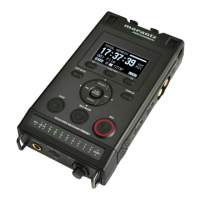52
State of pin *7) Category Pin name Name I/O Function Pin
count
(Pin nos.)
RST_N=”
L”
RST_N
goes “H”
PCUT=1
D15-0 Data Bus I/O This is a 16-bit data bus. 24-39 *4) *4)
AD6-1 Multiplex
Address Bus
I/O When a multiplex bus is specified, this
group of pins is used on a time-shared
basis for some of the data buses (D6-D1),
or for 6 bits of the address bus (A6-A1).
Input
(Hi-z)
A6-1 Address Bus IN This is a 6-bit address bus.
Because the data bus consists of 16 bits,
there is no A0.
18-23 Input
*5)
Input
*5)
ALE Address Latch
Enable
IN When a multiplex bus is specified, the A6
pin is used as the ALE signal.
Input Input
Input
(Hi-z)
Input
CS_N Chip Select IN Setting this to the “L” level selects this
controller.
56 Input
*6)
Input
*6)
Input
RD_N Read Strobe IN Setting this to the “L” level reads data
from the controller registers.
53 Input Input Input
WR0_N D7-0 Byte Write
Strobe
IN At the rising edge, D7-D0 are written to
the registers of the controller.
54 Input
*6)
Input
*6)
Input
WR1_N D15-8 Byte Write
Strobe
IN At the rising edge, D15-D8 are written to
the registers of the controller.
55 Input
*6)
Input
*6)
Input
CPU bus
interface
MPBUS*3 Bus Mode
Selection
IN Setting this to the “L” level selects a
separate bus.
Setting this to the “H” level selects a
multiplex bus.
This should be fixed at either the “H” or “L”
level.
17 Input
*3)
Input
*3)
Input
*3)
Split bus
interface
SD7-0 Split Data Bus I/O If a split bus is selected, this functions as
the data bus for the split bus.
43-50 Input
(Hi-z)
Input
(Hi-z)
Input
(Hi-z)
DREQ0_N*1
DREQ1_N*1
DMA Request OUT This notifies the system of a D0FIFO port
or D1FIFO port DMA transfer request.
57, 60 H H H/L
*8)
DACK0_N*1
DACK1_N*1
DMA
Acknowledge
IN Input the DMA Acknowledge signal for the
D0FIFO or D1FIFO port.
58, 61 Input Input
DSTB0_N*2 Data Strobe 0 IN This functions as the data strobe signal
for the D0FIFO port.
Because it is also used for the DMA
Acknowledge signal of the D1FIFO port,
the DSTB0_N function cannot be used if
the DACK1_N function is being used.
Input
DMA bus
interface
DEND0_N*1
DEND1_N*1
DMA Transfer
End
I/O <In the FIFO port access writing
direction>
This receives the Transfer End signal
from another peripheral chip or the CPU
as an input signal.
<In the FIFO port access reading
direction>
This indicates the transfer end data as an
output signal.
59, 62 Input
(Hi-z)
Input
(Hi-z)
Input
(Hi-z)
INT_N Interrupt OUT In the “L” active state, this notifies the
system of various types of interrupts
relating to USB communication.
51 H H H Interrupt/
SOF
output
SOF_N SOF pulse output OUT When an SOF is detected in the “L” active
state, an SOF pulse is output.
52 H H H
10 NI tupni noitallicsO NIXClock
XOUT Oscillation output OUT
A crystal oscillator should be connected
between XIN and XOUT. When using
external clock input, the external clock
signal should be connected to XIN, and
XOUT should be open.
11
PIN DESCRIPTIONS

